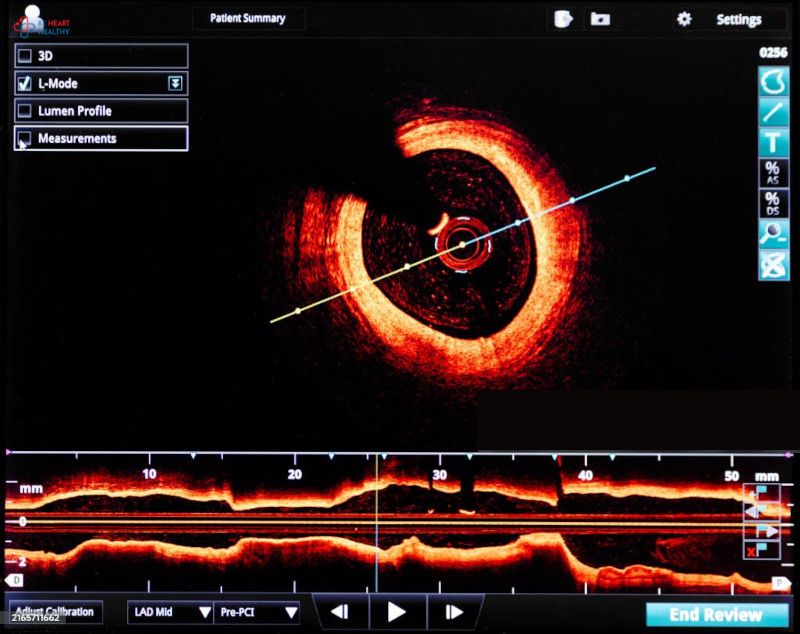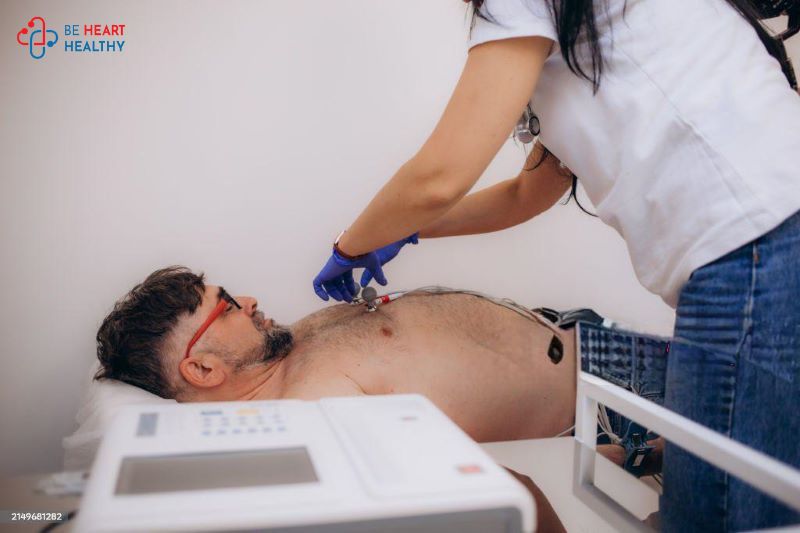Optical Coherence Tomography (OCT) is a cutting-edge imaging technology that has transformed the field of cardiology. This minimally invasive technique provides high-resolution images of blood vessels, helping cardiologists diagnose and treat complex cardiac conditions with precision. In this article, we’ll explore the significance of OCT in cardiology, how it works, its applications, and what patients can expect during the procedure.
OCT is a diagnostic tool that uses light waves to create detailed cross-sectional images of blood vessels, particularly the coronary arteries. Unlike traditional imaging techniques, OCT offers an unparalleled view of the internal structure of the arteries, allowing cardiologists to assess plaque build-up, measure stent placement, and identify microvascular damage.
The high-resolution images provided by OCT play a crucial role in diagnosing coronary artery disease and planning interventions like angioplasty or stent placement. Its ability to detect even the smallest irregularities makes it an invaluable tool for ensuring the success of cardiac procedures.
The Role of an OCT Specialist
An OCT specialist is a cardiologist trained in performing and interpreting Optical Coherence Tomography scans. These specialists use OCT to gather detailed insights into the condition of a patient’s arteries and make informed decisions about treatment strategies.
OCT specialists play a pivotal role in:
- Identifying the type and severity of arterial plaque.
- Evaluating the success of stent placement during angioplasty.
- Detecting subtle abnormalities in the artery walls.
In Mumbai, several renowned cardiologists are OCT specialists, offering patients access to this advanced diagnostic technology. Consulting an experienced OCT specialist ensures accurate diagnosis and effective treatment planning.
The OCT Cardiac Procedure: What to Expect
The OCT cardiac procedure is typically performed during coronary angiography or as part of an interventional procedure like angioplasty. It involves the following steps:
- Preparation: The patient is prepared for the procedure by administering a local anaesthetic. A catheter is inserted into a blood vessel, usually in the groin or wrist.
- Imaging: A tiny OCT imaging probe is advanced through the catheter to the area of interest in the coronary arteries.
- Image Capture: Light waves are used to create detailed images of the artery. A contrast dye is often injected to improve visibility.
- Analysis: The cardiologist analyses the images to assess plaque build-up, artery structure, and other abnormalities.
The procedure is safe, quick, and generally well-tolerated by patients. Its real-time imaging capability enables cardiologists to make immediate decisions about the next steps in treatment.
Applications of OCT in Cardiology
OCT has a wide range of applications in cardiology, making it a versatile tool for both diagnosis and treatment:
- Assessing Plaque Characteristics: OCT helps distinguish between different types of plaque, such as calcified or lipid-rich plaque, to guide treatment.
- Guiding Stent Placement: During angioplasty, OCT ensures the accurate placement of stents and checks for complications like stent malapposition.
- Monitoring Post-Procedure Outcomes: After interventions, OCT can assess the healing process and identify any issues that may require further attention.
These applications make OCT an indispensable technology in modern cardiology.
Understanding the OCT Cardiology Cost
The OCT cardiology cost in India varies depending on the healthcare facility, the complexity of the procedure, and the expertise of the cardiologist. In Mumbai, the cost typically ranges from ₹25,000 to ₹50,000 per session.
While the procedure may seem expensive, its ability to provide precise diagnostic information often leads to more effective treatments, potentially reducing the need for additional interventions. Patients should discuss the cost and insurance coverage with their healthcare provider before undergoing the procedure.
Benefits of OCT in Cardiology
OCT offers several advantages over traditional imaging techniques:
- High Resolution: Provides detailed images that allow for precise diagnosis and treatment.
- Minimally Invasive: Involves minimal discomfort and quick recovery.
- Real-Time Imaging: Enables immediate analysis and decision-making during procedures.
- Improved Outcomes: Helps optimise stent placement and reduce complications.
The use of OCT in cardiology represents a significant advancement in the field, improving the quality of care for patients.
Finding the Right OCT Specialist in Mumbai
Patients seeking OCT imaging should consult a trusted cardiology centre or hospital in Mumbai. Look for facilities equipped with state-of-the-art OCT technology and experienced specialists who can provide personalised care.
Final Thoughts
The OCT cardiac procedure is a revolutionary diagnostic tool that has redefined how cardiologists approach coronary artery disease and related conditions. Its high-resolution imaging capabilities provide invaluable insights, ensuring accurate diagnosis and effective treatment.
If you’re considering OCT, consult an OCT specialist in Mumbai to learn more about the procedure and its benefits. With its wide-ranging applications and proven efficacy, OCT is truly a game-changer in modern cardiology.



